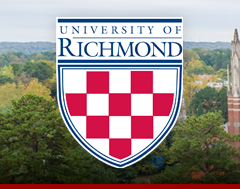Off-campus University of Richmond users: To download campus access theses, please use the following link to log in to our proxy server with your university username and password.
Date of Award
5-2025
Document Type
Restricted Thesis: Campus only access
Degree Name
Bachelor of Science
Department
Biology
First Advisor
Dr. Jonathan Richardson
Second Advisor
Dr. Jory Brinkerhoff
Abstract
A. Introduction Rattus norvegicus, the brown rat, is one of the most successful urban exploiters, thriving in human-dominated environments due to its generalist diet, rapid reproduction, and adaptability to marginal habitats. With increasing urbanization, understanding how urban environments influence the microbial communities of these rodents is important, both for public health and ecological insights.
B. Methods This study characterizes the gut microbiome of R. norvegicus in Richmond, Virginia, using metagenomic sequencing of fecal samples collected between 2020 and 2024 across 10 different locations.
C. Results Our findings show that the microbial composition of Richmond rats is homogeneous across location, time, sex, and age. However, microbial diversity was positively associated with urbanization level, suggesting that more built environments may increase microbial richness, possibly due to access to anthropogenic resources and enhanced gene flow among rat populations. Additionally, 62.5% of rats were infected with at least one potentially zoonotic pathogen, with the majority being co-infected with two or more. Pathogen prevalence and abundance varied spatially, highlighting non-uniform zoonotic risk across the city.
D. Conclusions These findings provide critical baseline data for public health monitoring and offer new insights into how urban environments shape microbiomes and pathogen transmission in urban rats
Recommended Citation
Cheeks, Kalynn, "Assessing the zoonotic and non-pathogenic bacterial microbiome of Norway rats in Richmond, Virginia, using nanopore sequencing" (2025). Honors Theses. 1804.
https://scholarship.richmond.edu/honors-theses/1804
